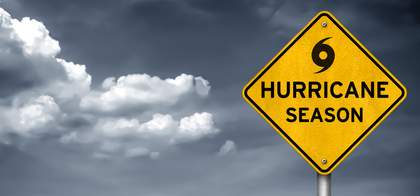Weathering the storm: The impact of hurricanes on the energy sector
With Hurricane Beryl ripping through the gulf of Texas two weeks ago and an active storm season expected, we explore the impact of tropical storms on the energy sector.

With Hurricane Beryl ripping through the gulf of Texas two weeks ago and an active storm season expected, we explore the impact of tropical storms on the energy sector.
Hurricanes rank among the most powerful and destructive natural events, capable of causing widespread devastation. One critical sector significantly affected by hurricanes is the energy industry.
Disruption to energy production
The US Gulf Coast, a key region for oil and gas production, saw disruptions due to Hurricane Beryl, leading to a supply decrease. While Beryl's impact was minimal, hurricanes previously have caused more lasting effects on electricity prices when significant damage occurs. For instance, Hurricane Katrina in 2005 caused extensive damage to Gulf oil rigs, significantly reducing production and driving up prices.
Hurricanes can disrupt natural gas production by damaging offshore platforms, pipelines, and processing plants, leading to supply shortages. Since natural gas is a primary fuel for electricity generation, these shortages can increase prices, especially in regions heavily reliant on natural gas for heating and electricity. Consequently, higher natural gas prices raise the cost of electricity production, which leads to increased electricity prices for consumers.
Unforeseen impacts: How hurricanes can temporarily lower energy prices
While it’s commonly understood that hurricanes can drive energy prices up due to disruptions in supply and infrastructure, there are scenarios where hurricanes can lead to a decrease in energy market prices. This counterintuitive effect can be attributed to several factors that come into play during and after such powerful storms.
Hurricanes often cause widespread power outages, significantly reducing energy consumption in affected areas. For example, Hurricane Laura in 2020 left nearly 900,000 people without power across Louisiana and Texas. This substantial decrease in demand can lead to lower electricity prices temporarily. Hurricane Harvey in 2017 also led to a similar outcome. Mandatory evacuations and the shutdown of businesses and refineries along the Gulf Coast reduced local energy demand. With businesses closed and fewer people consuming energy, the demand dropped, influencing market prices.
The Gulf of Mexico has traditionally been a key area for offshore oil and gas production. However, with most U.S. natural gas now sourced from onshore reserves, disruptions in offshore production have less impact on overall supply. While hurricanes can damage offshore platforms and pipelines, the resulting production decrease is typically less significant than the demand reduction caused by these storms.
Hurricane Beryl caused a temporary decrease in natural gas pricing due to widespread power outages and reduced demand. The month of July began with natural gas prices at $2.48 per MMBtu. On July 8th, as Hurricane Beryl made landfall in Texas, prices decreased to $2.36. Following Freeport LNG's announcement of a slow restart, prices dropped further to $2.15. While the storm disrupted some natural gas production and infrastructure, the significant decrease in electricity consumption in affected areas, such as the Gulf Coast, led to lower overall demand for natural gas. This demand reduction outweighed the supply disruptions, resulting in a net decrease in pricing despite the storm's impact on production facilities.

Join us on our net zero journey
We’re a global player with the breadth of products and wealth of market experience to help you navigate your energy buying challenges and find the best solution for you.
